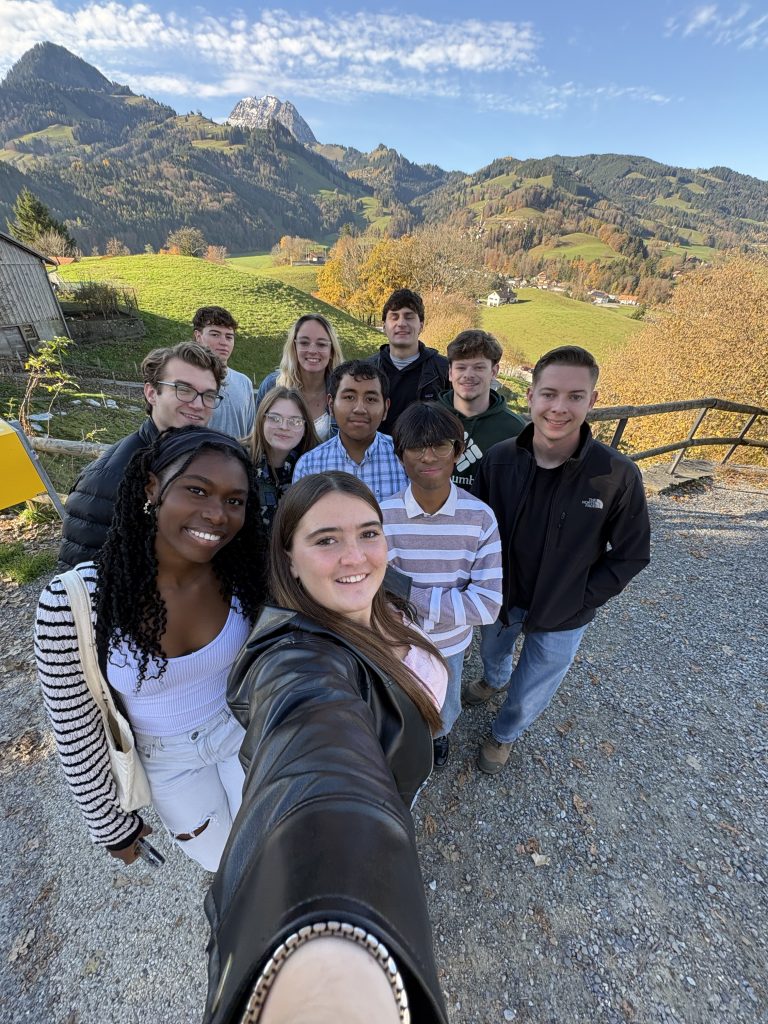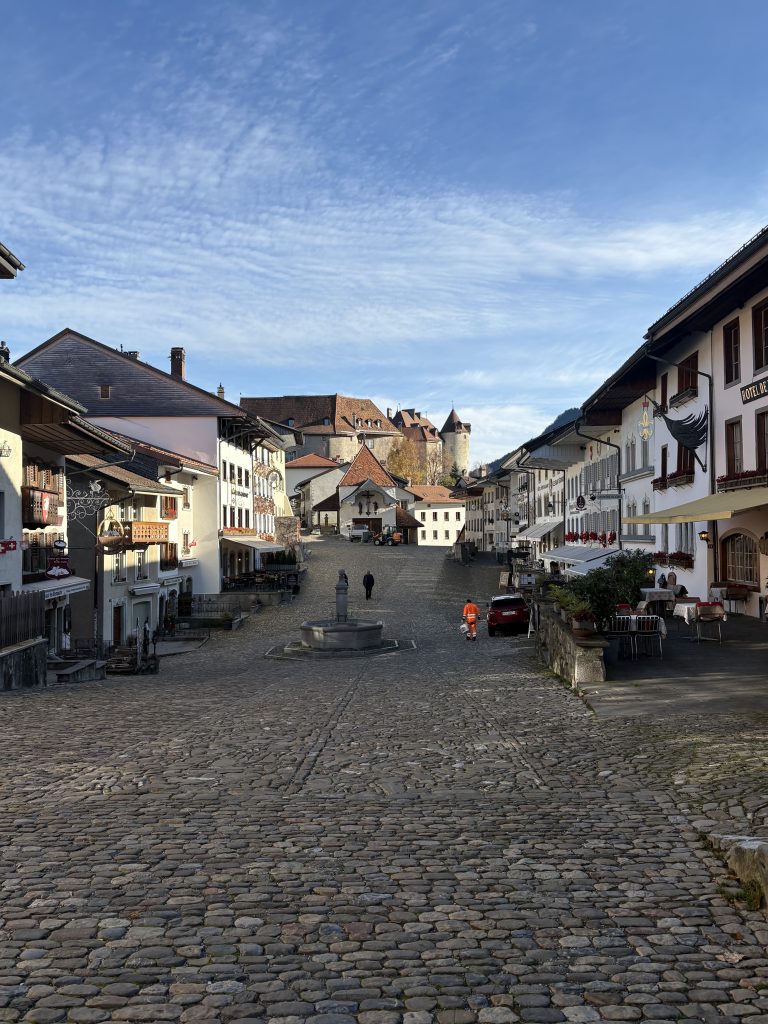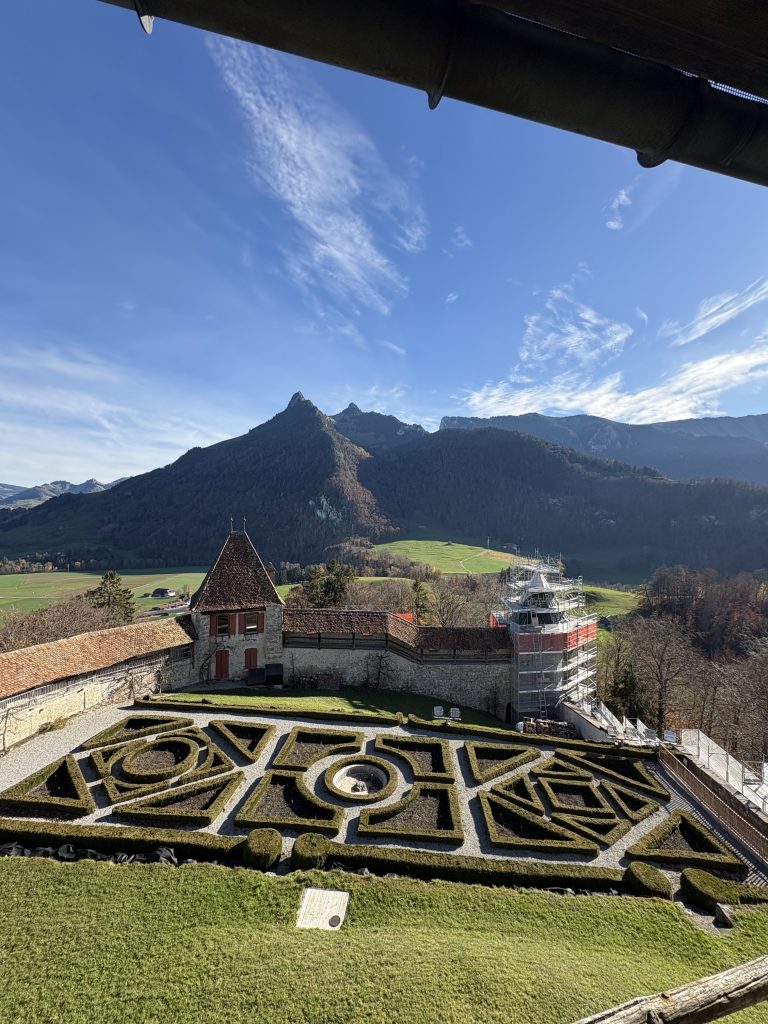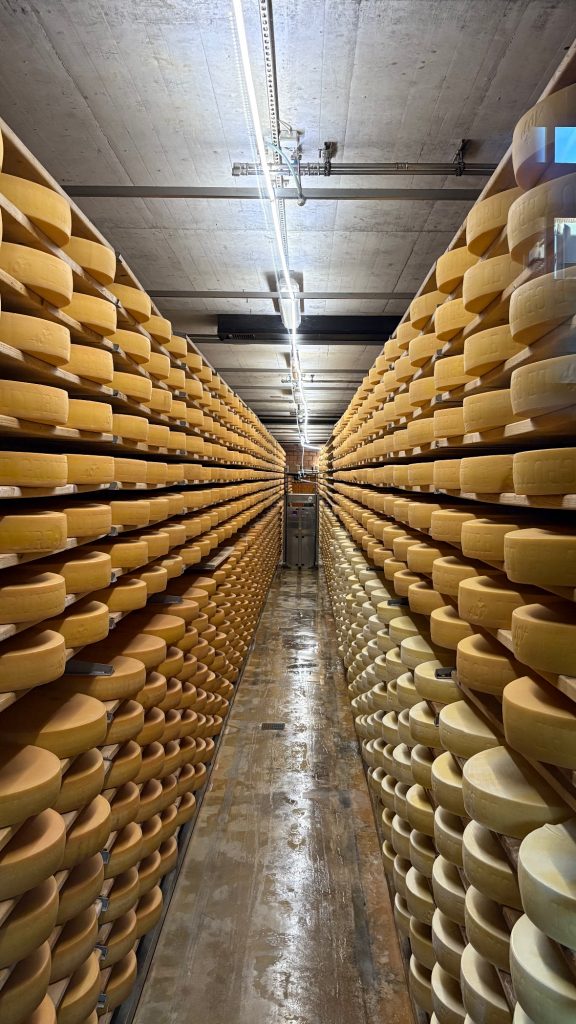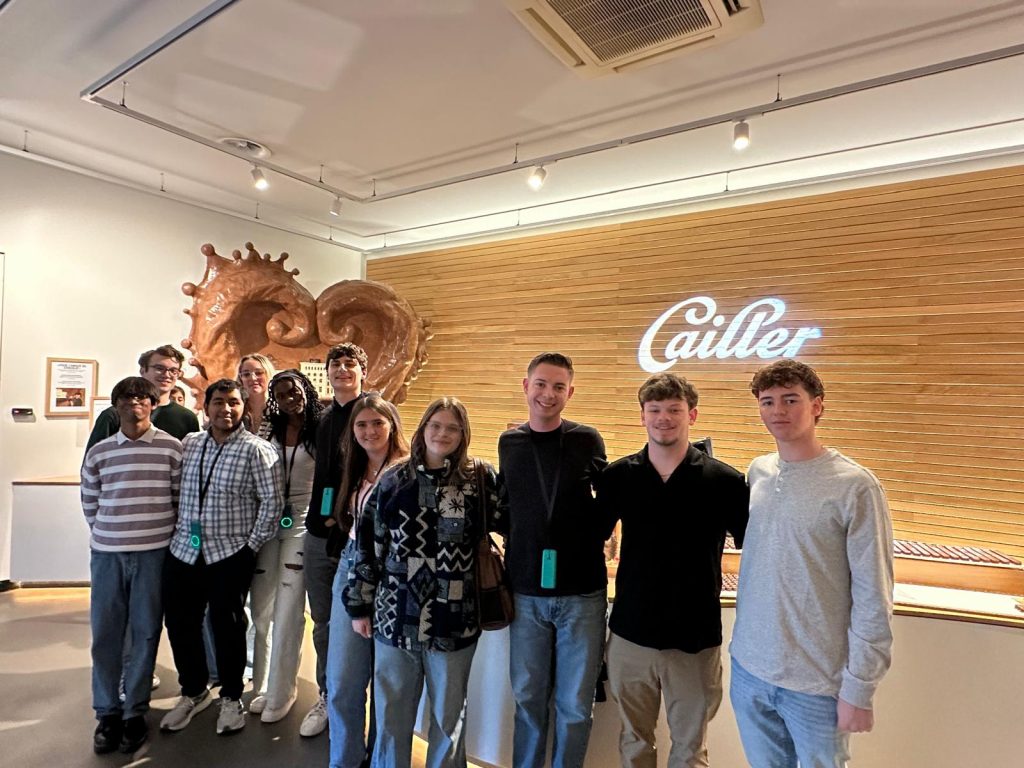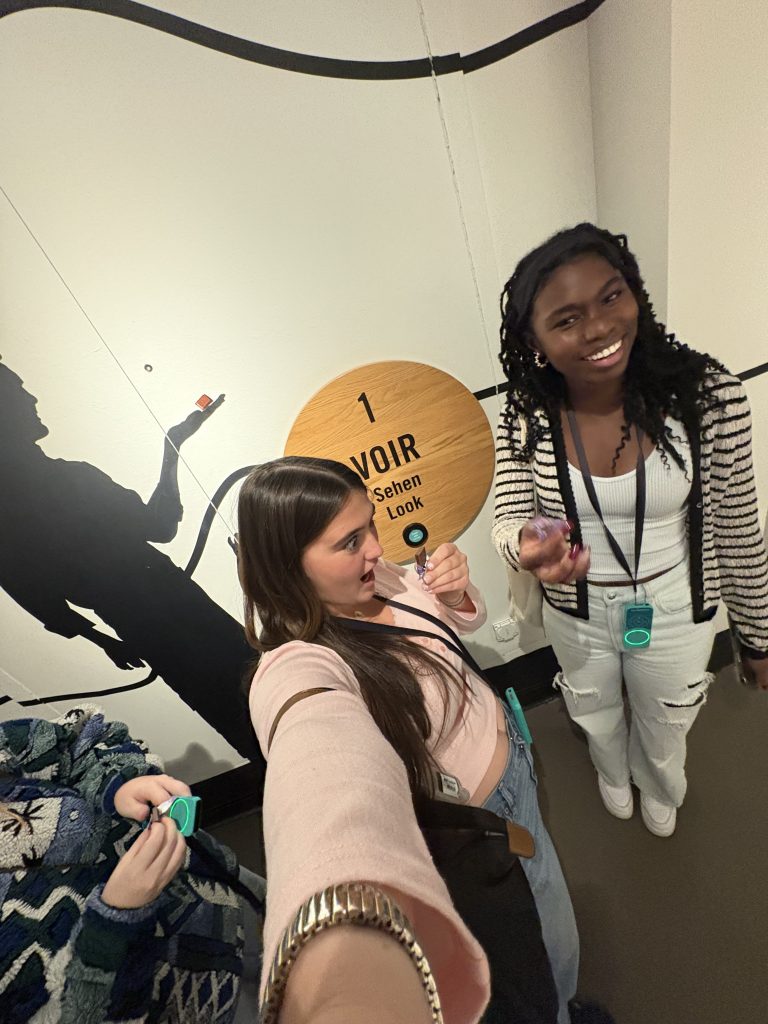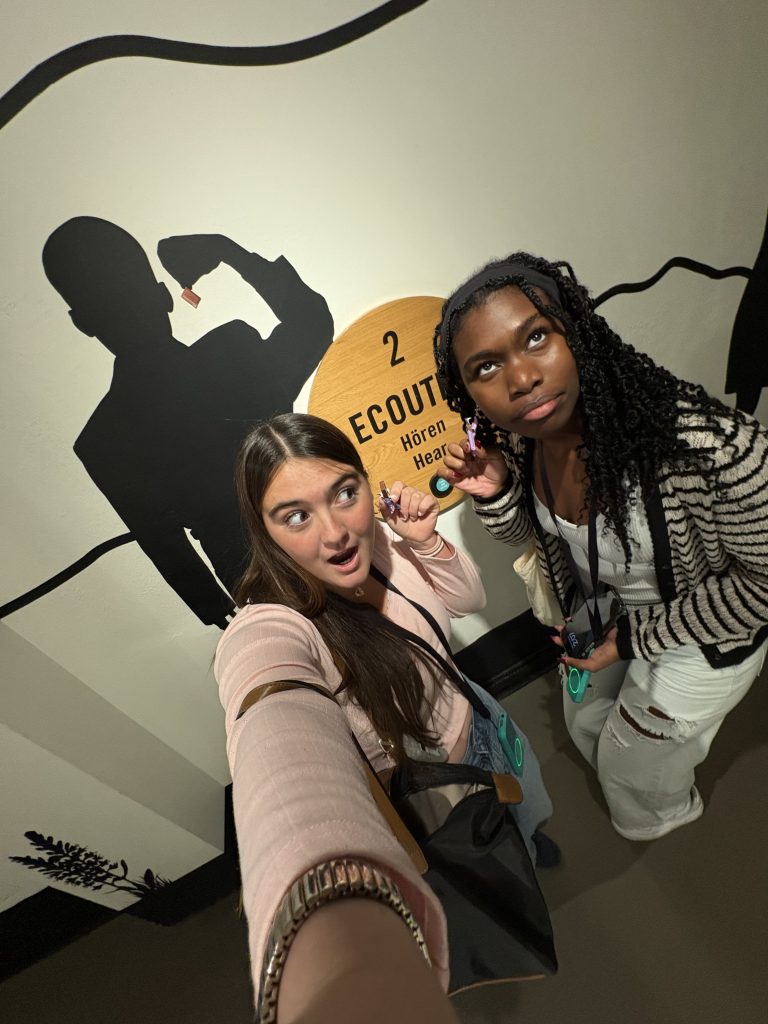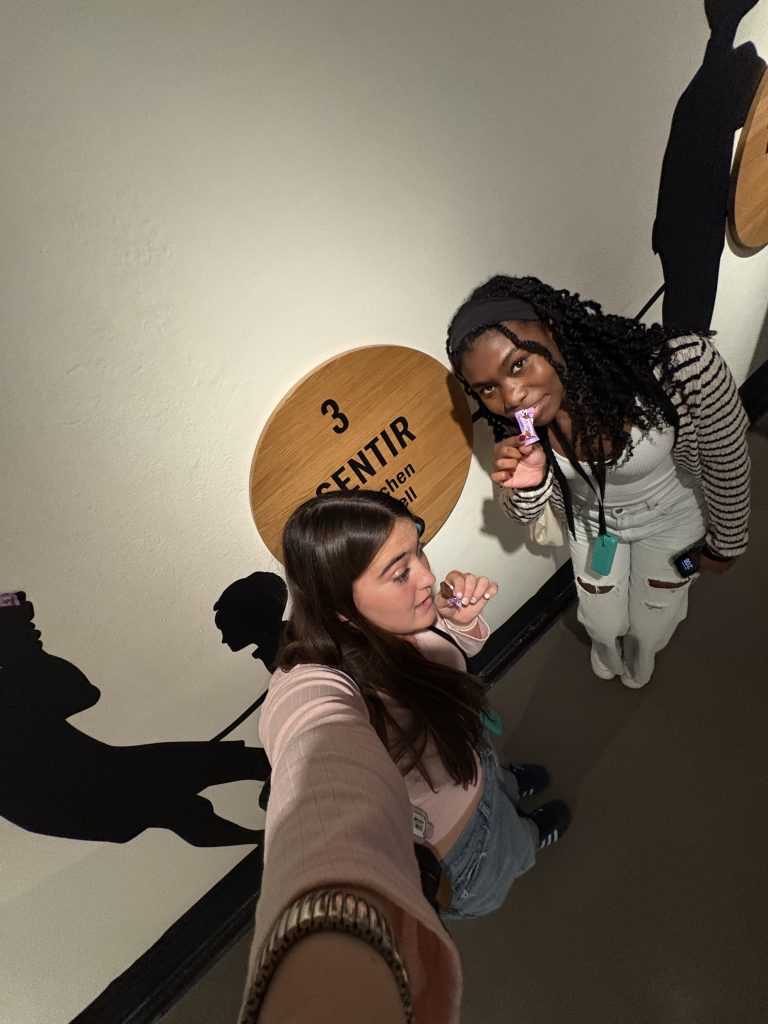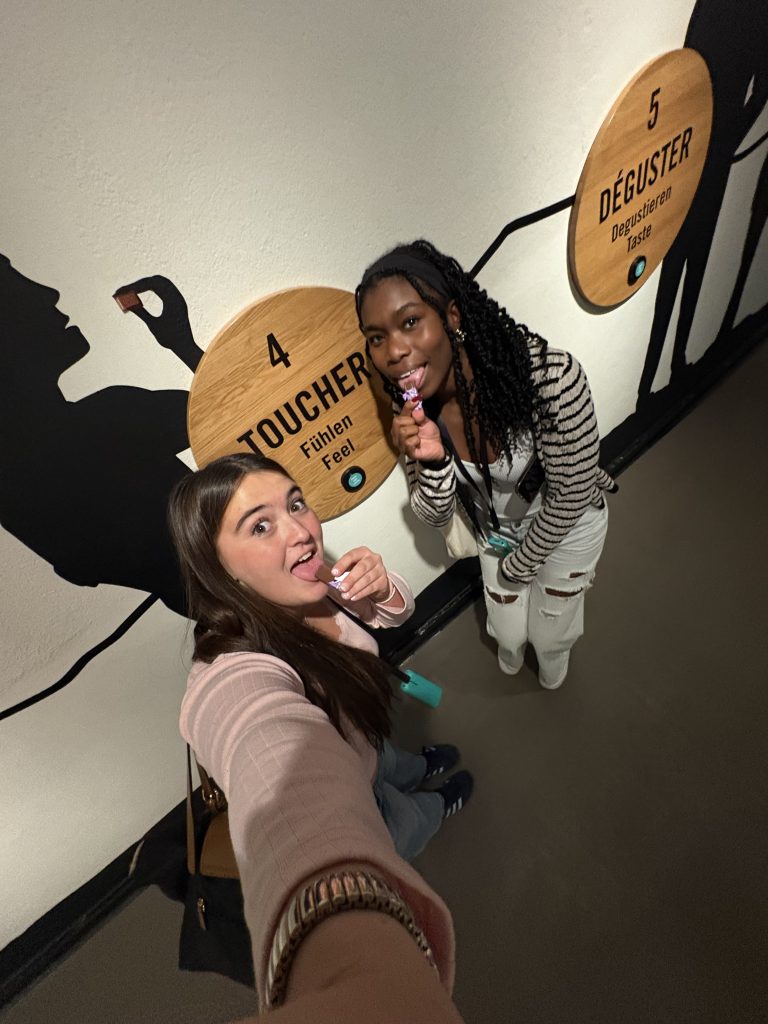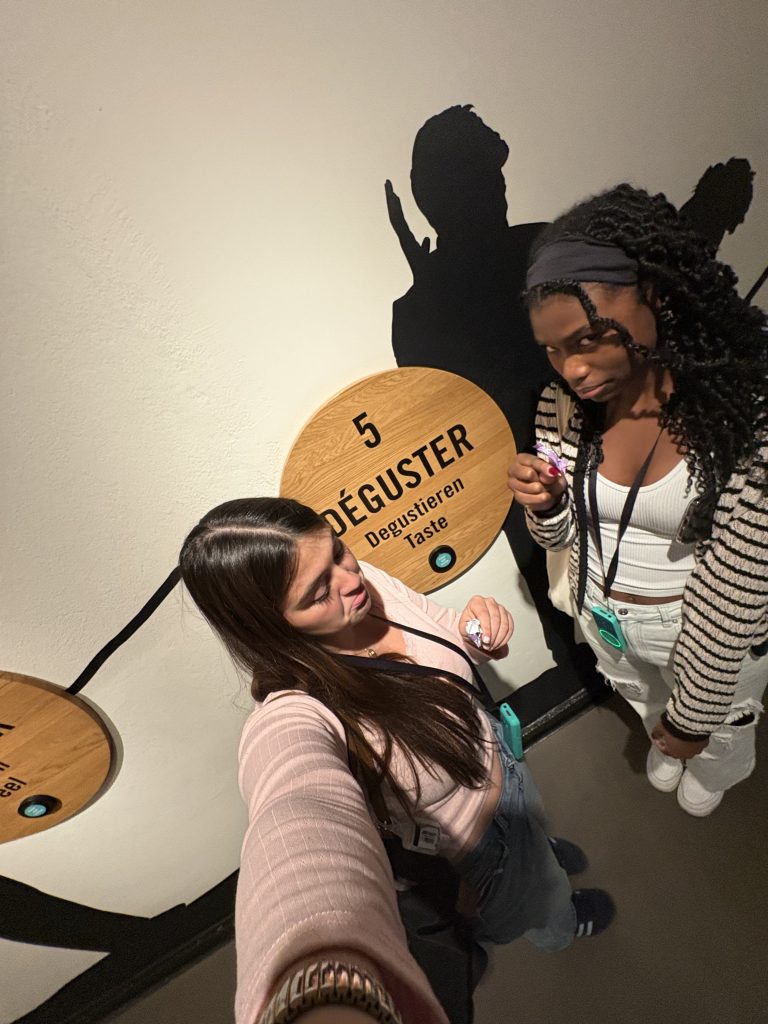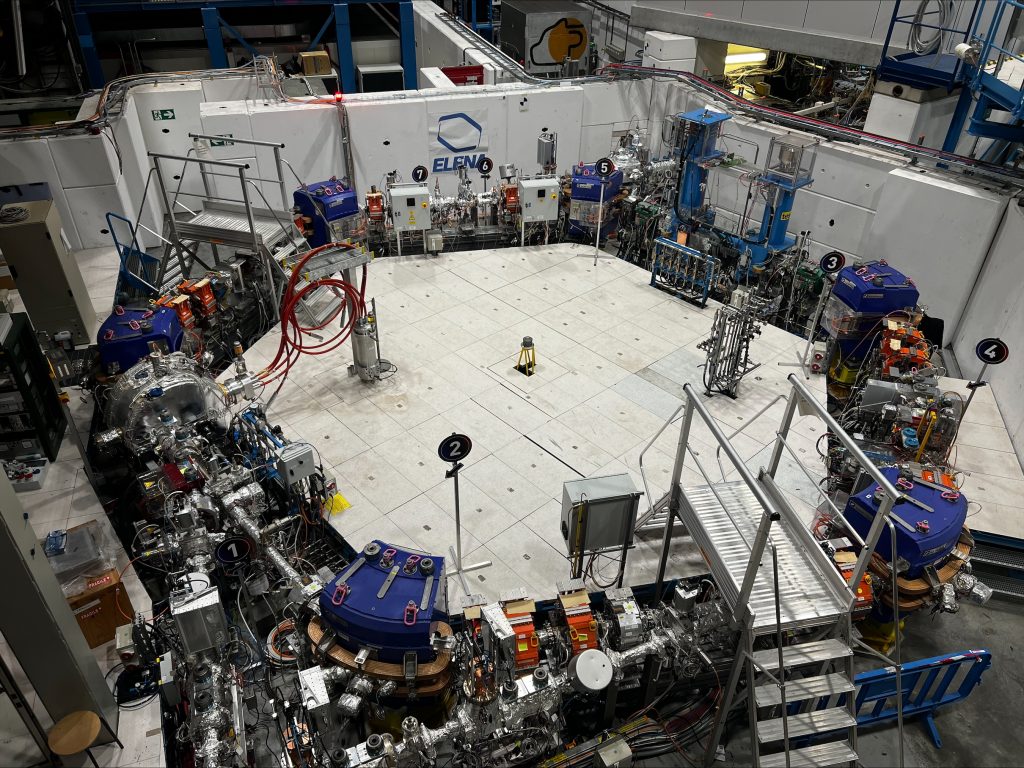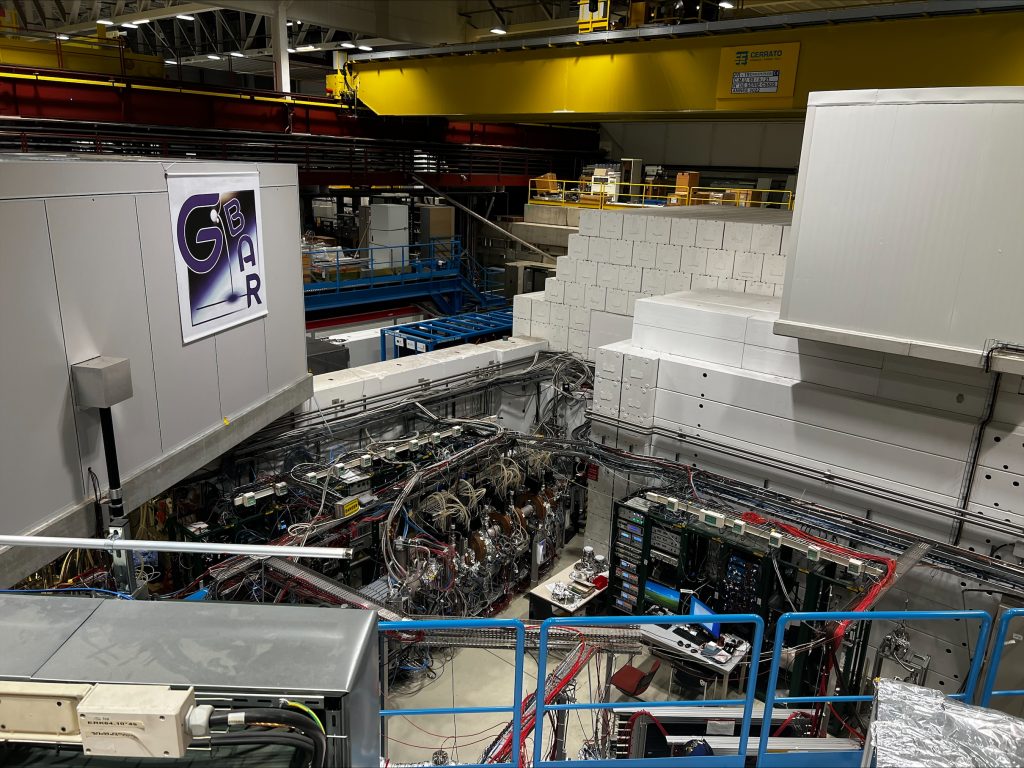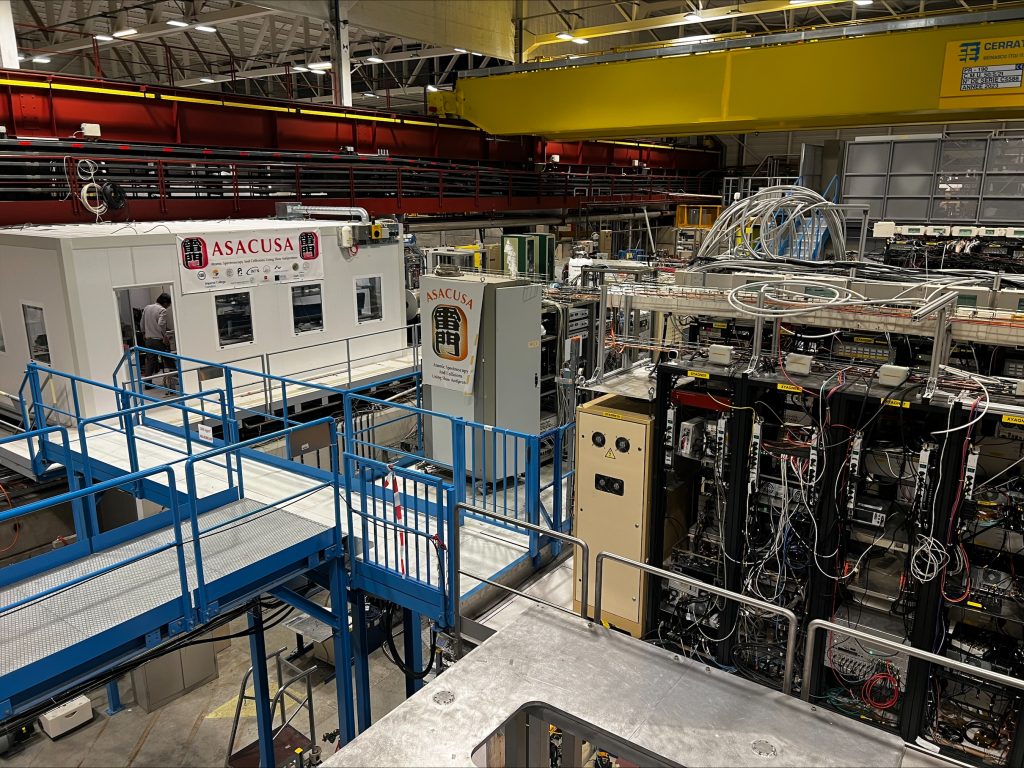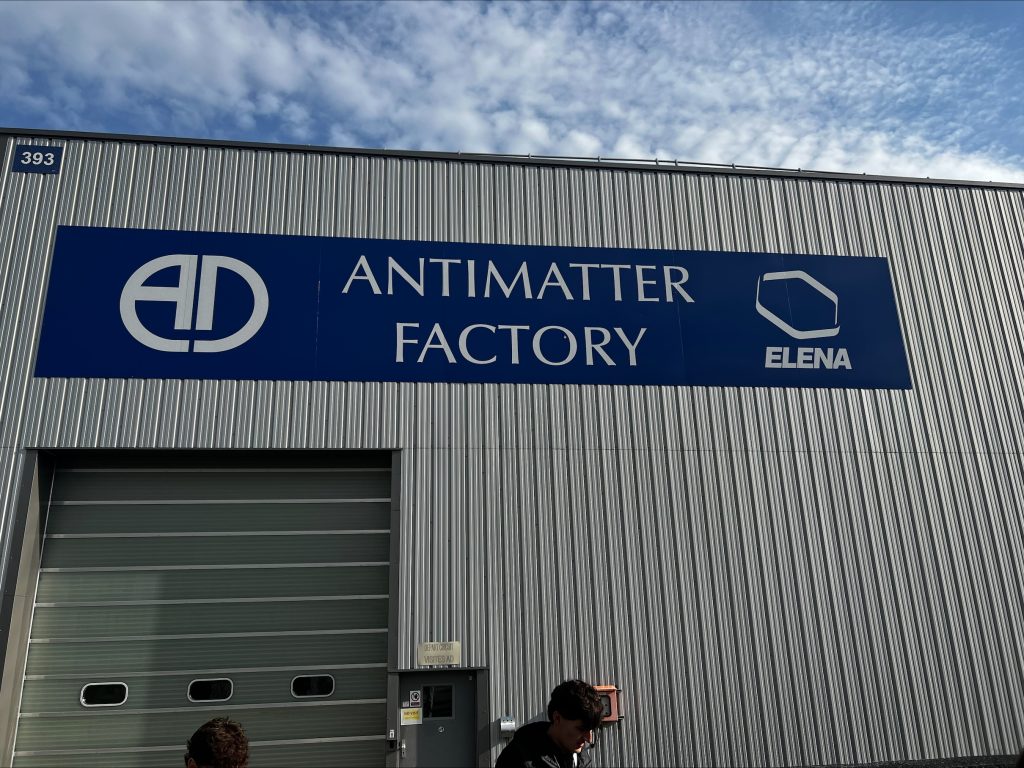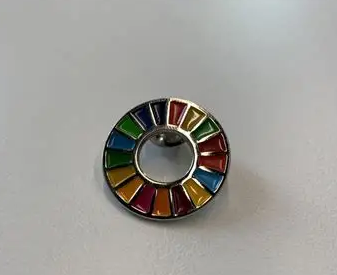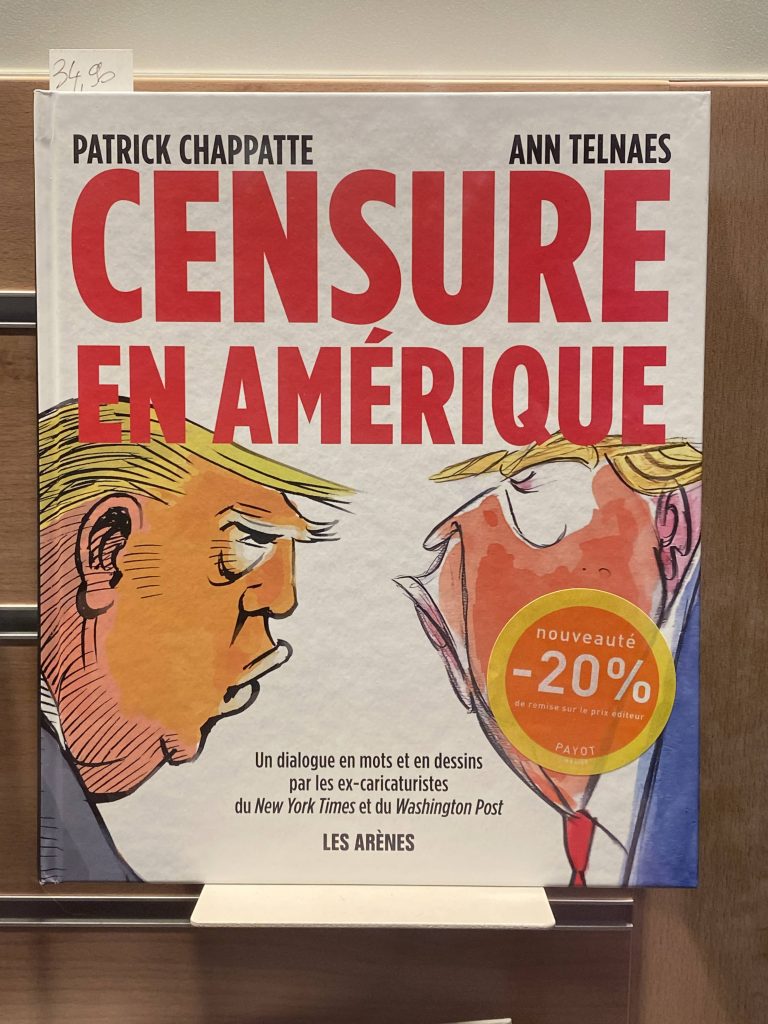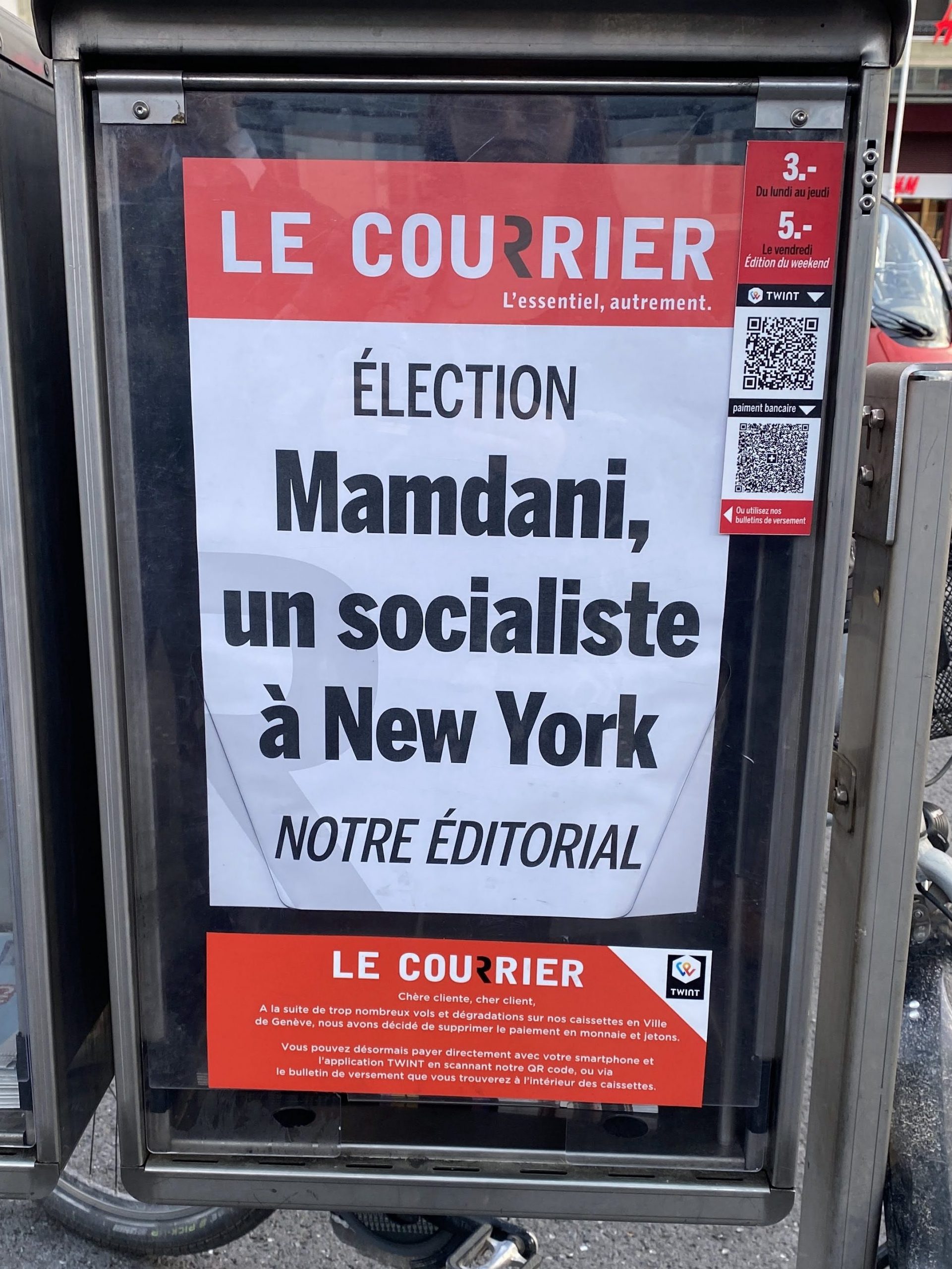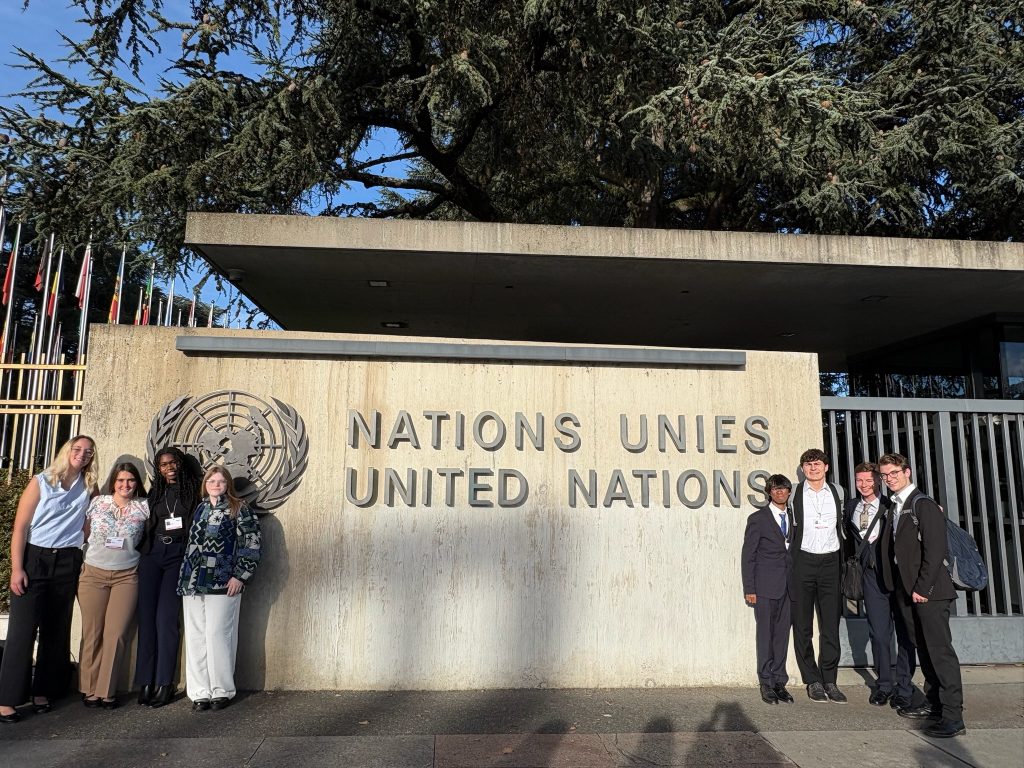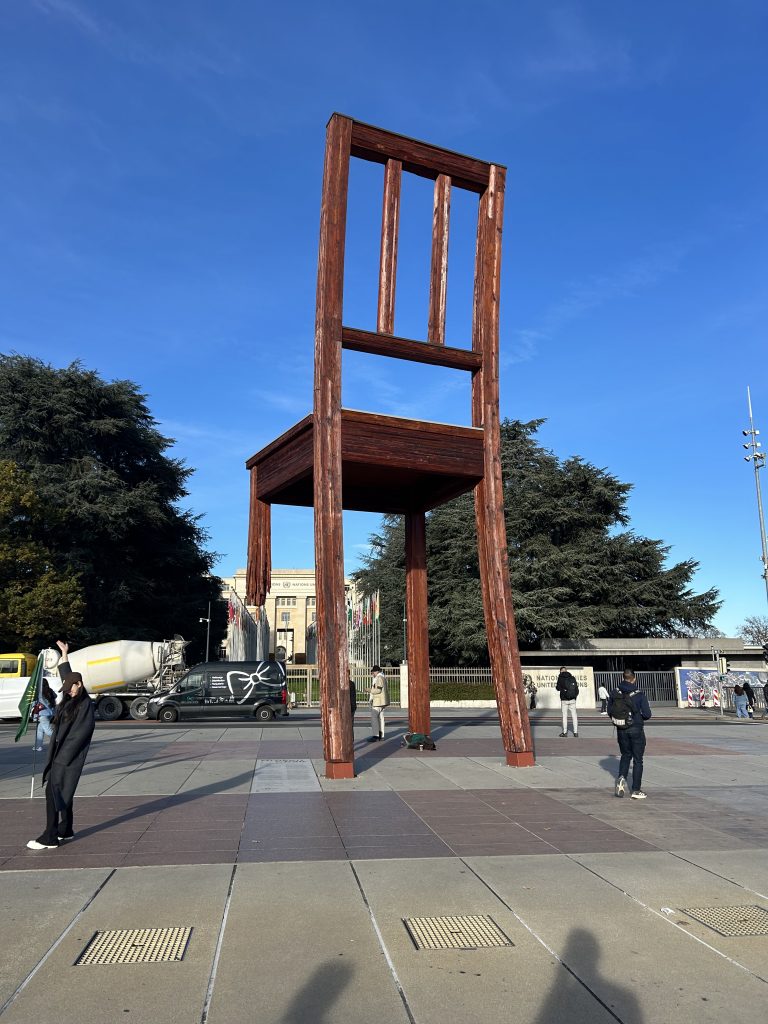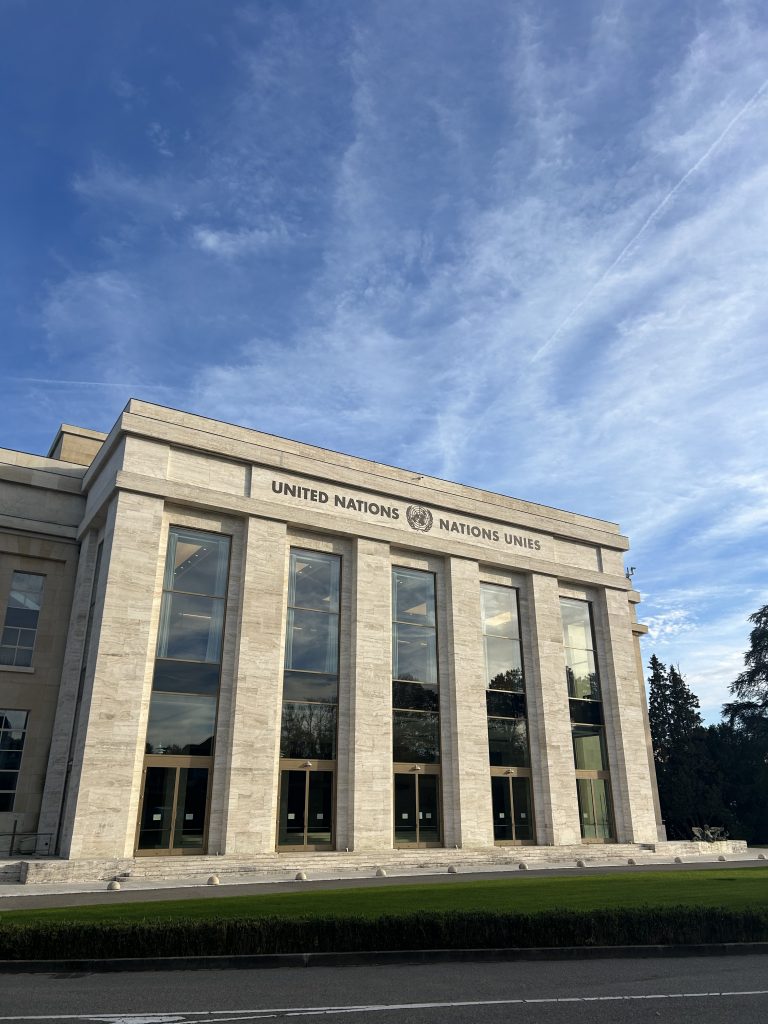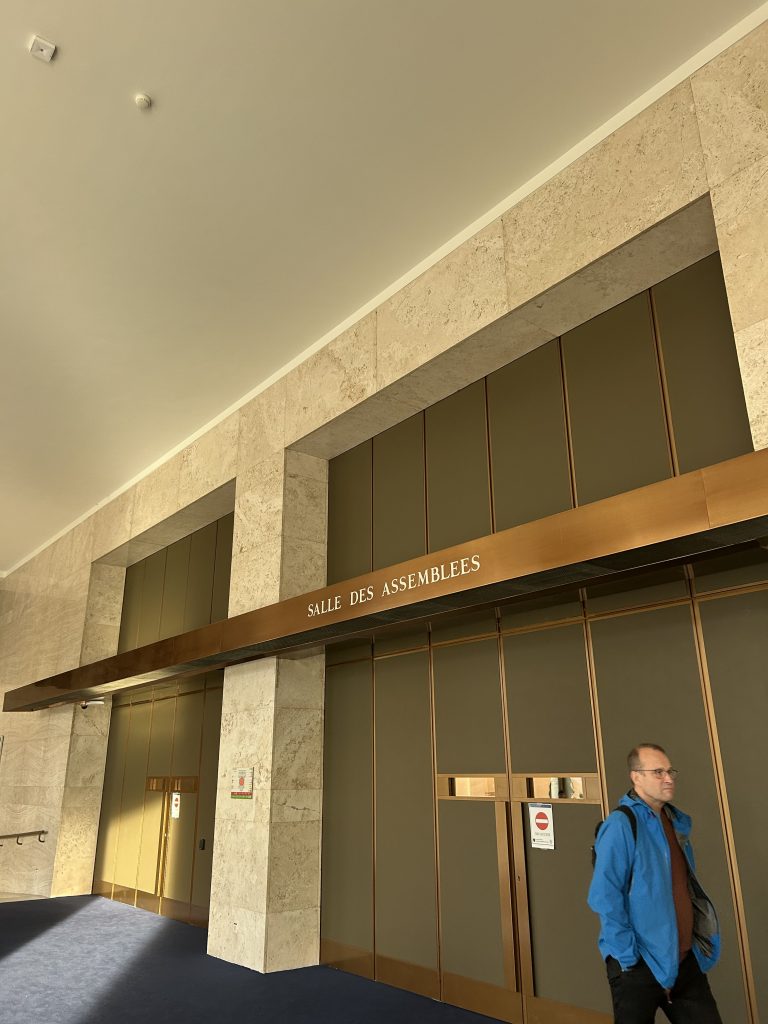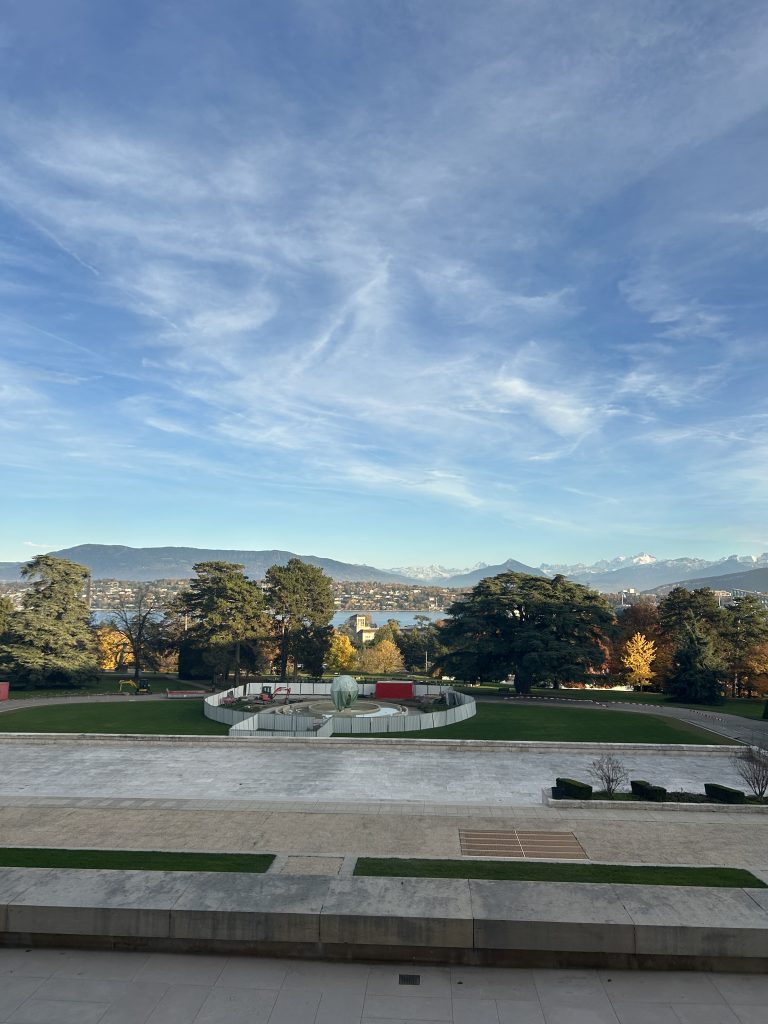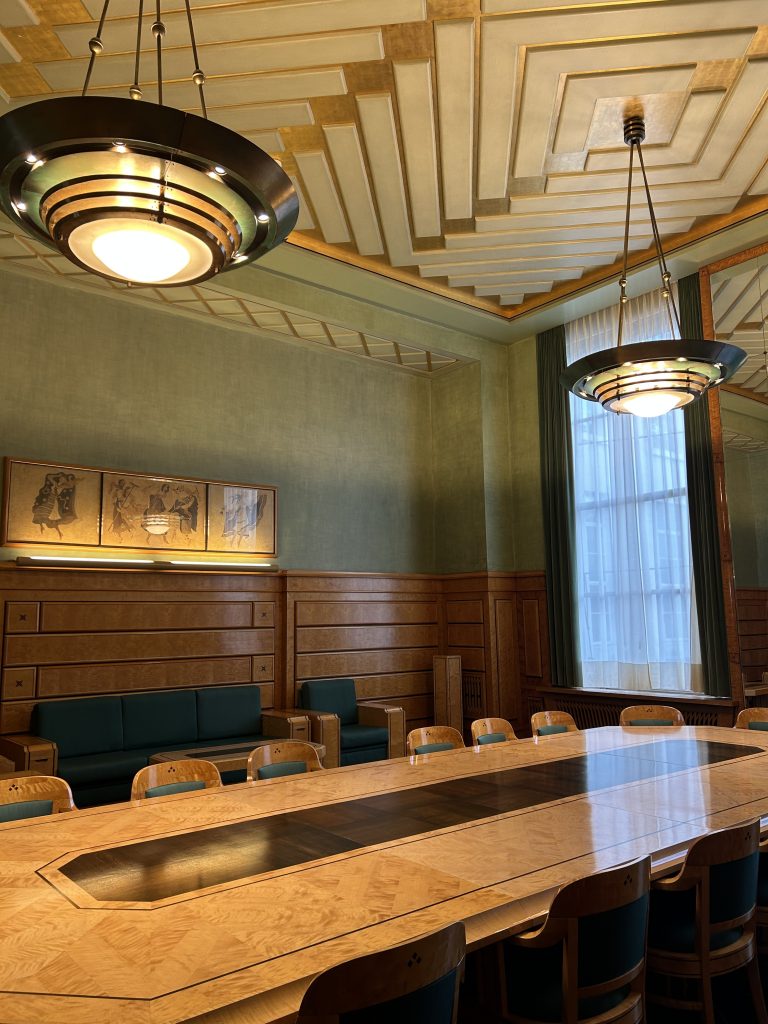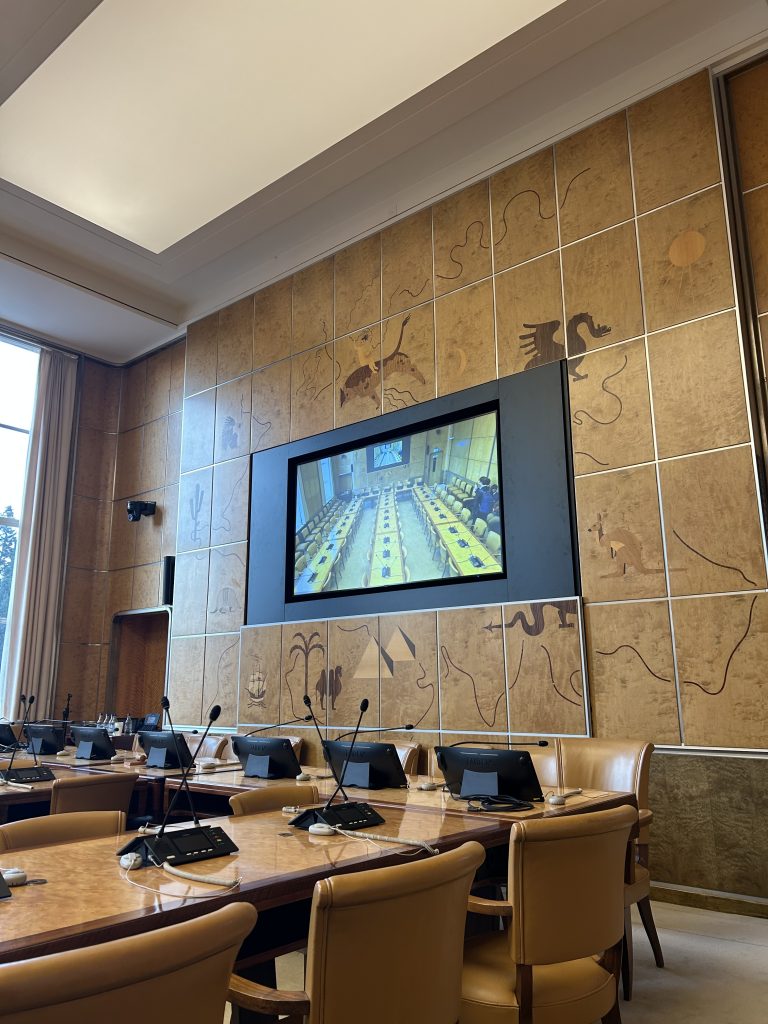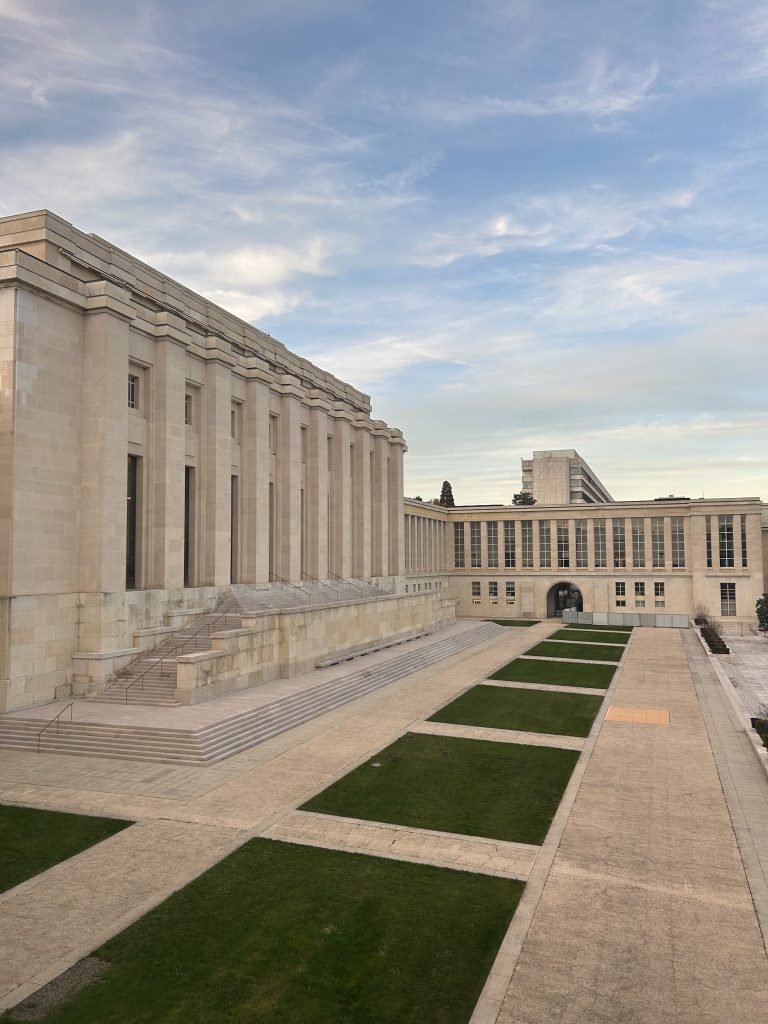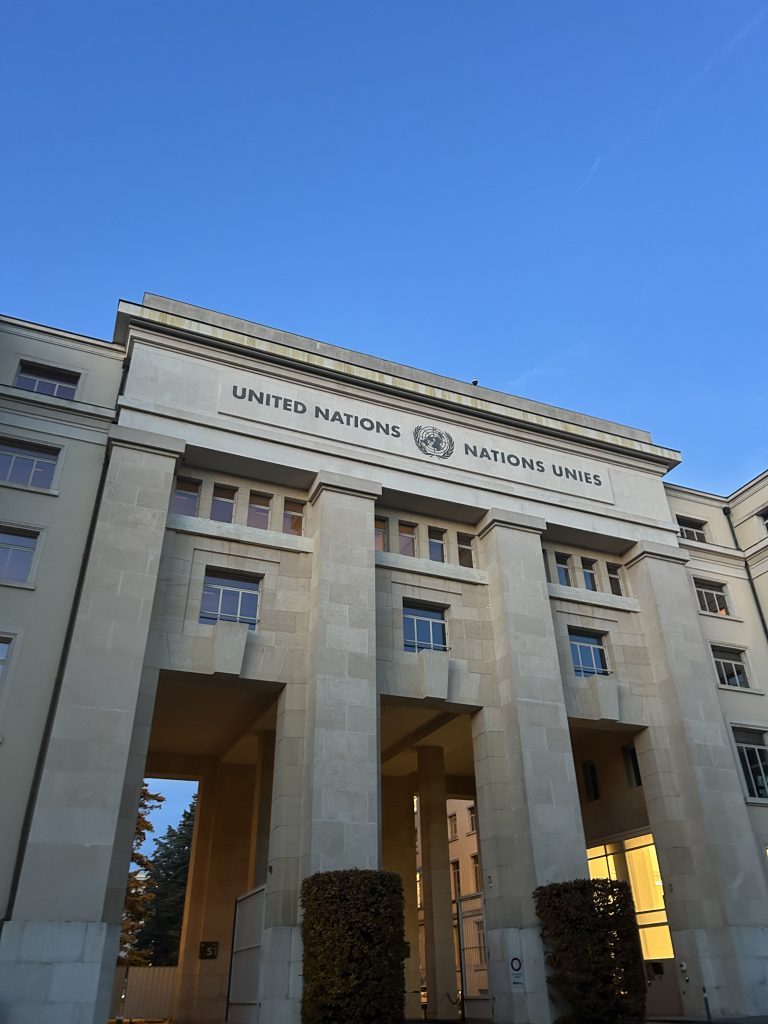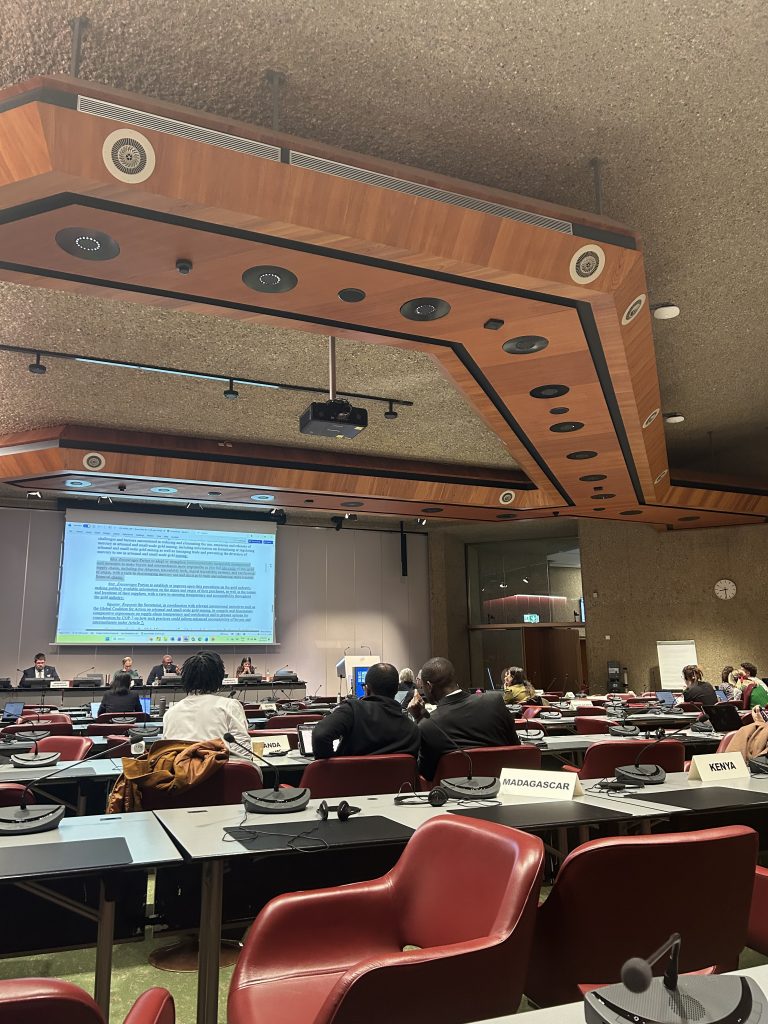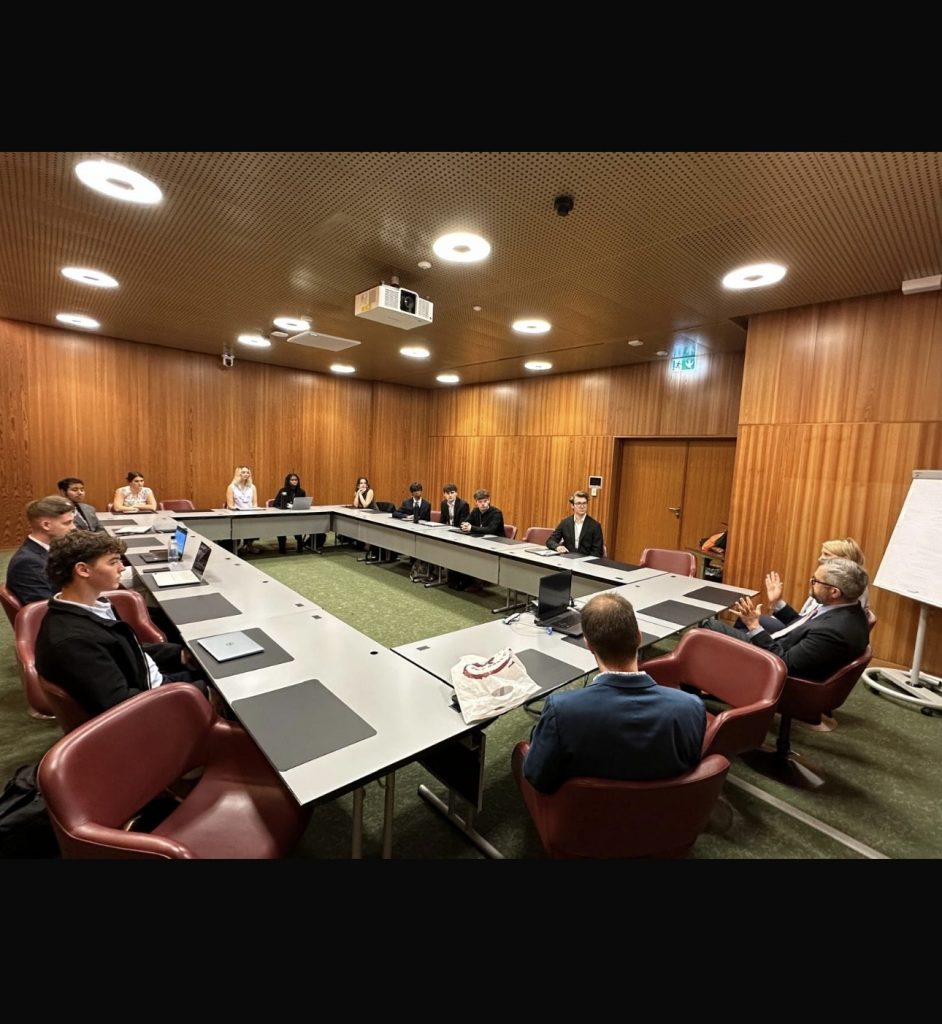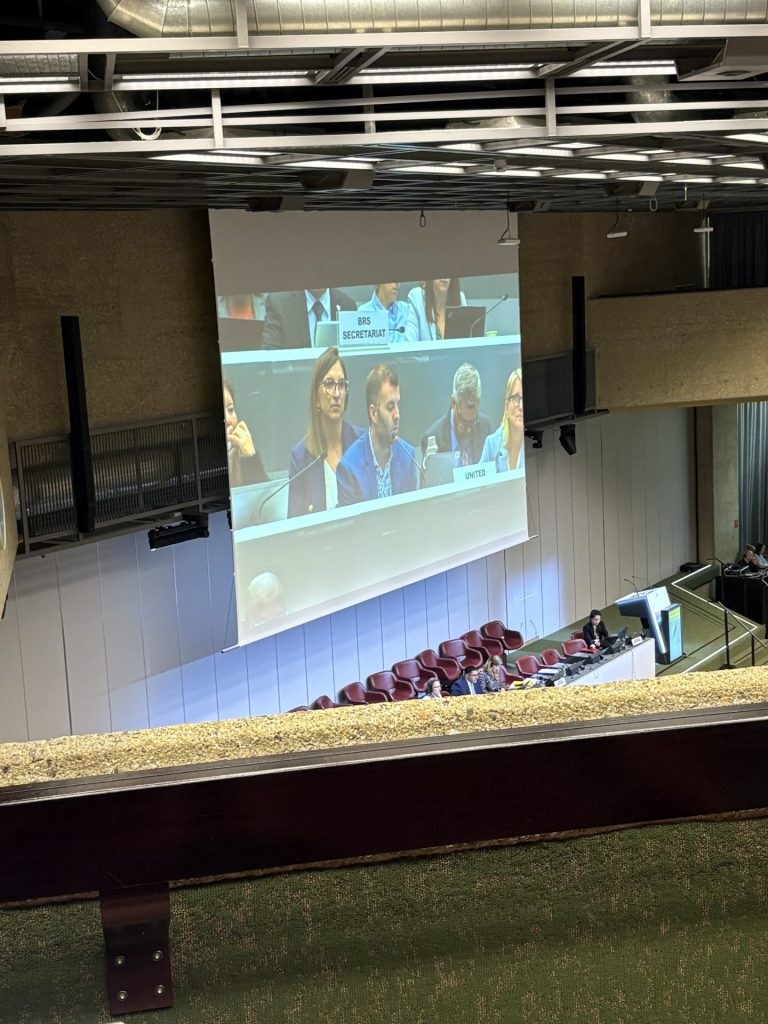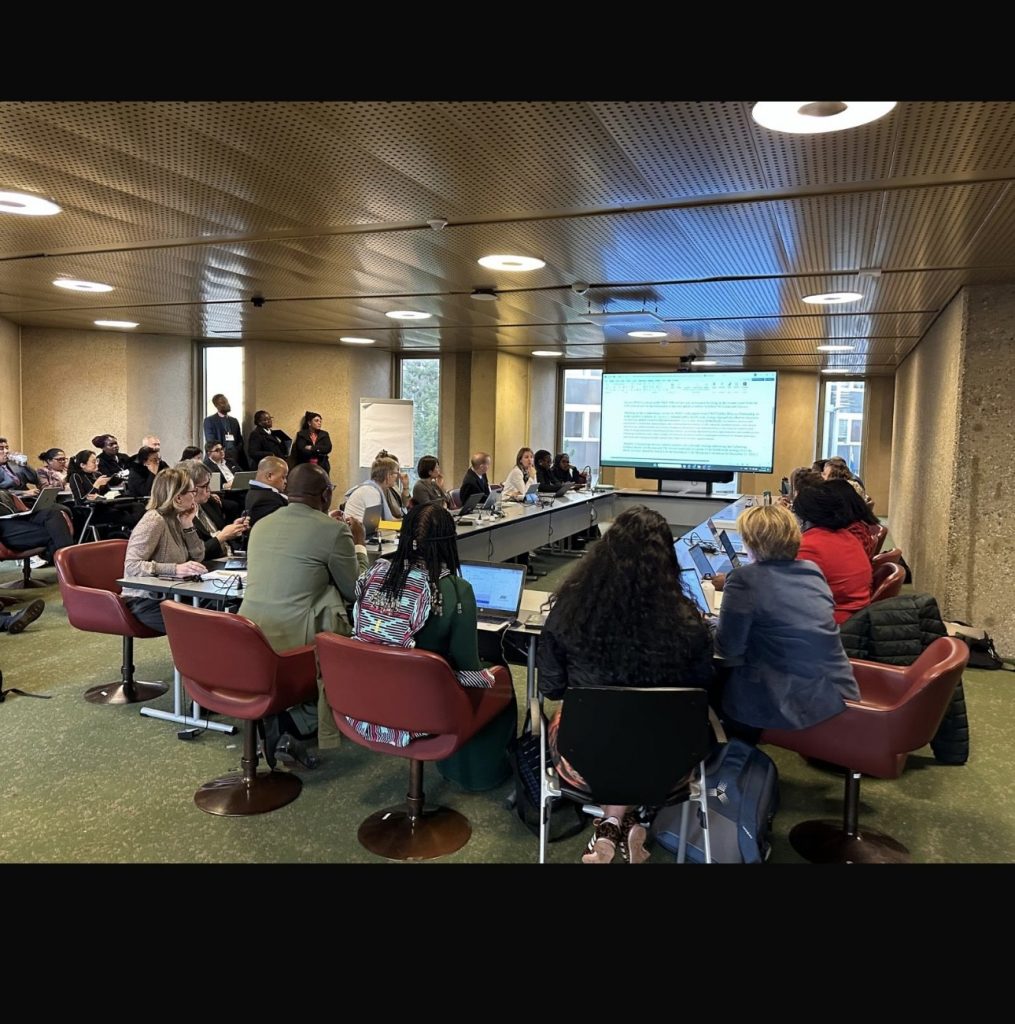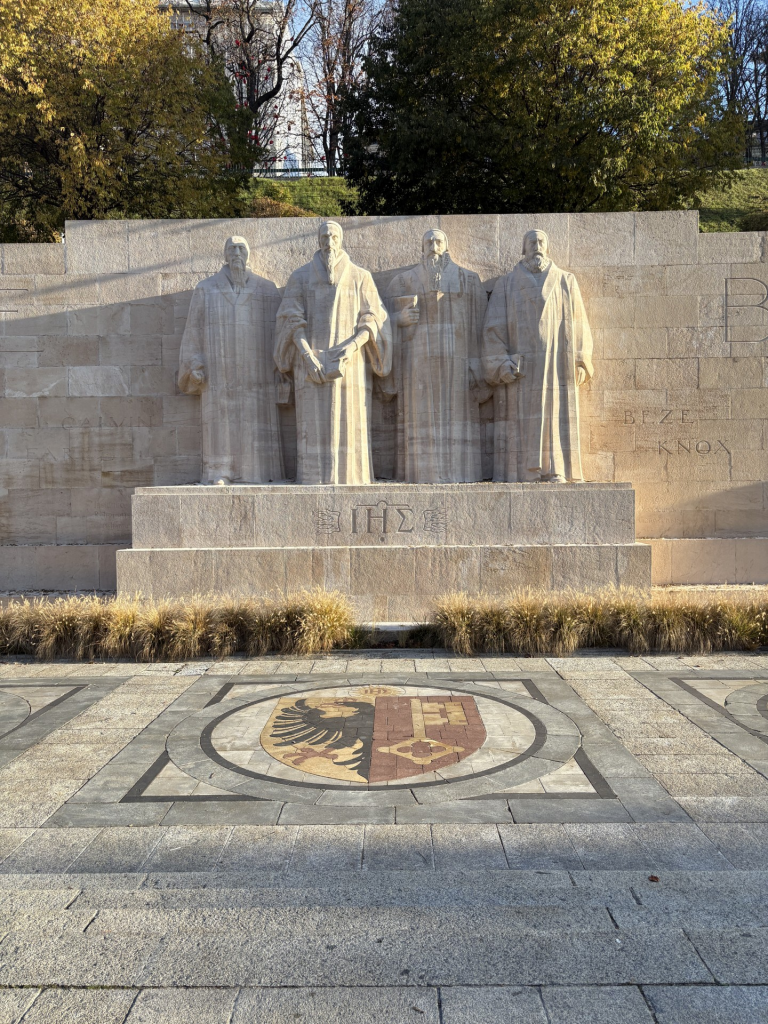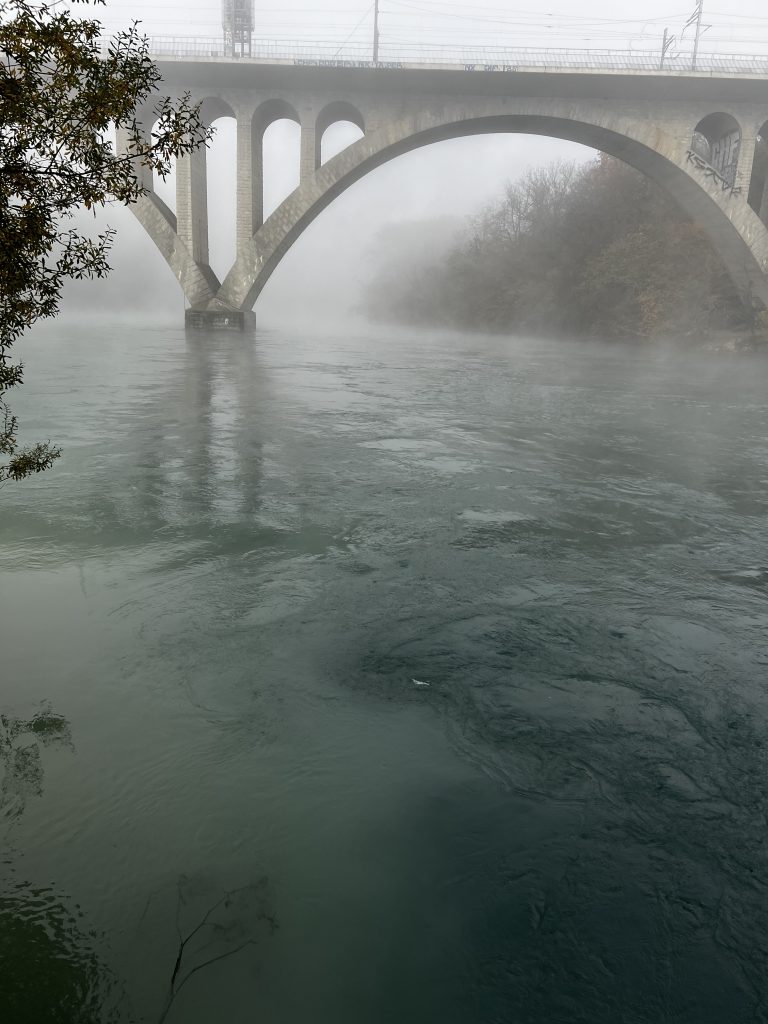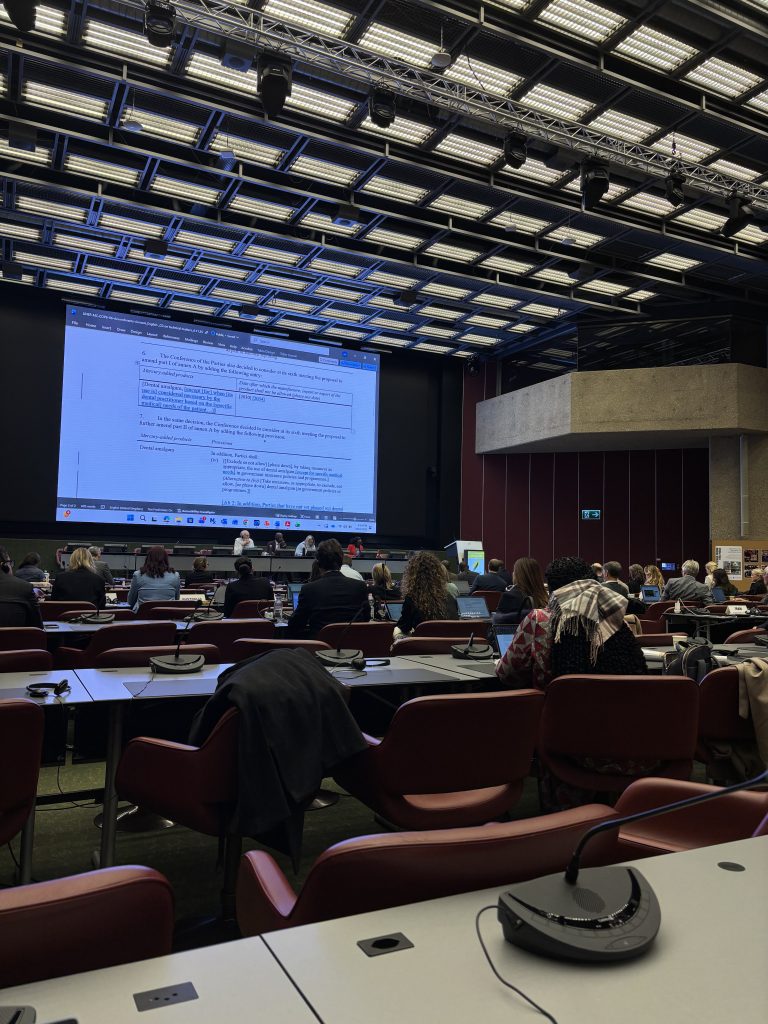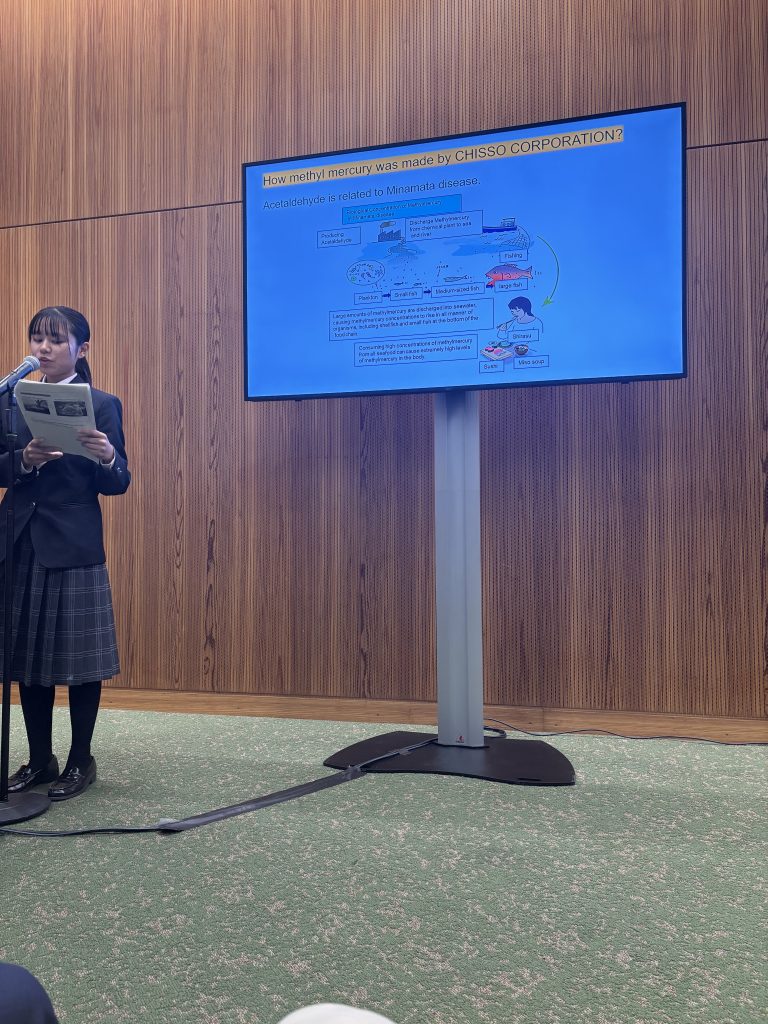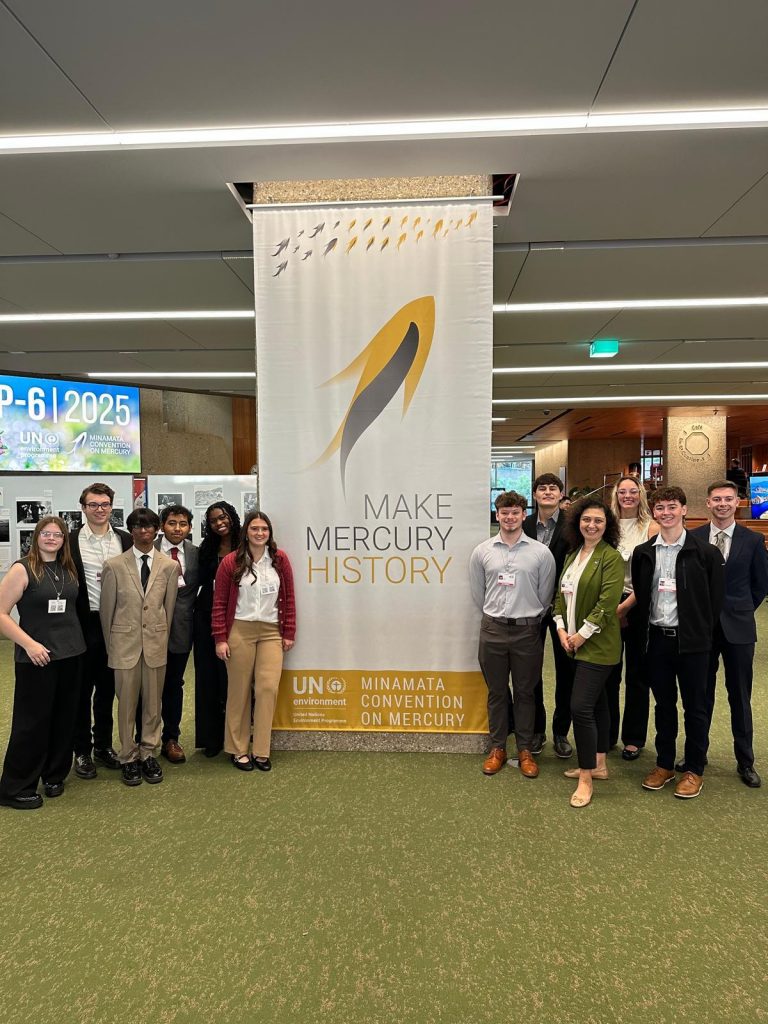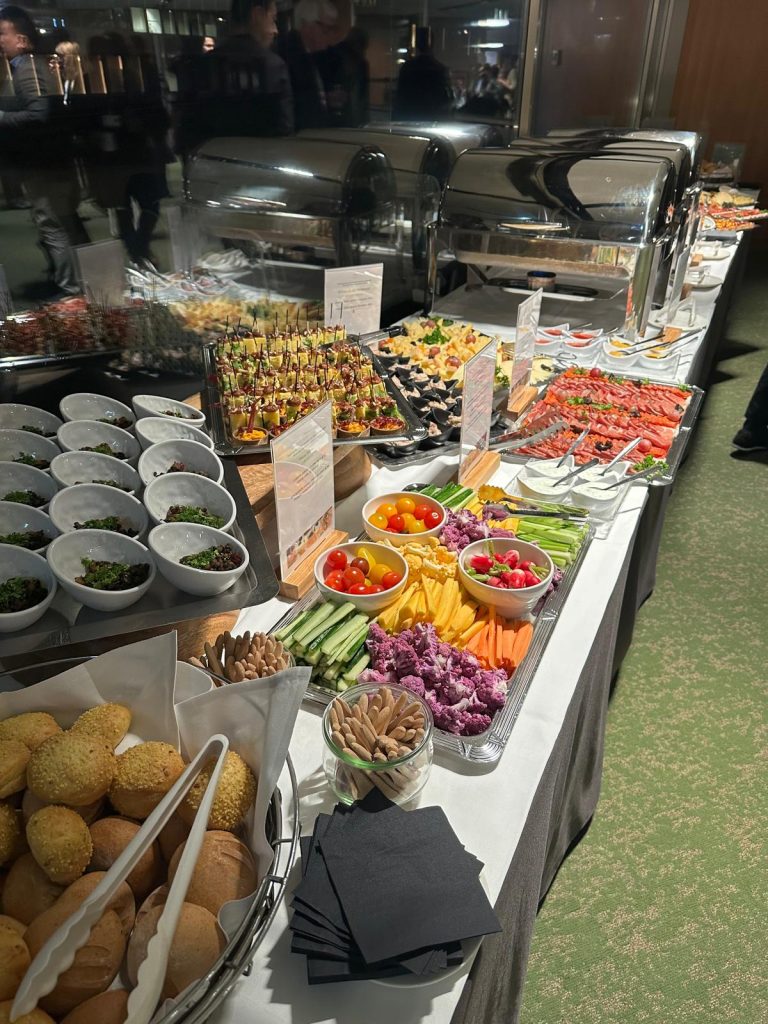By: Camryn Lewis
We started our day bright and early at 8 am to get in the van and head to the town of Gruyères, a small medieval town nestled in the Pre-Alp mountains. With an hour to explore, we found several small boutiques/gift shops, cafes, a castle, and even cows! The town has managed to preserve a lot of history, as we found what seems to be a fortress untouched at the edge of town. While the town is named after the famous cheese, Gruyère, it wasn’t advertised or even really prevalent in any of the shops that we visited, which I found interesting.

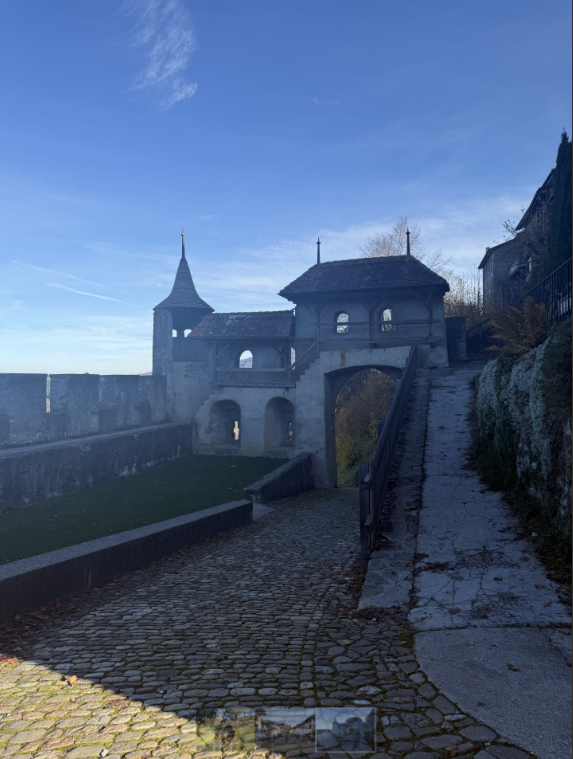
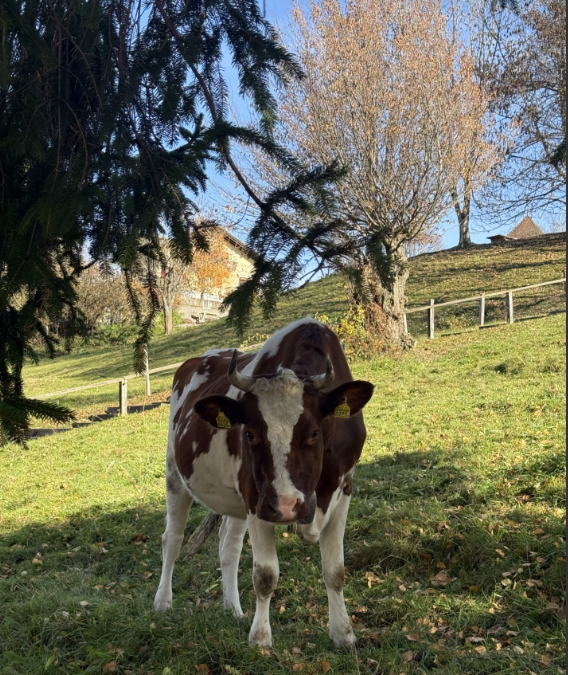
Then we made our way to La Maison De Gruyère for a tour guiding us through the cheese making process. We were given a headset with audio detailing the history and facts about how cheese is made. They also gave us a packet of three cheeses (6 months, 9 months, and 12 months old) to test taste as we made our way through the establishment. The flavors ranging from 6 to 12 months old were shockingly different, and demonstrated how much aging the cheese truly affects the taste. We’ve included a taste testing video in our fun stuff section for anyone interested in our cheese tasting review! After walking through hallways with pictures of the cows, plants local to the area, and different instruments used to make cheese, we entered a room with big glass windows looking in on the cheese making factory.
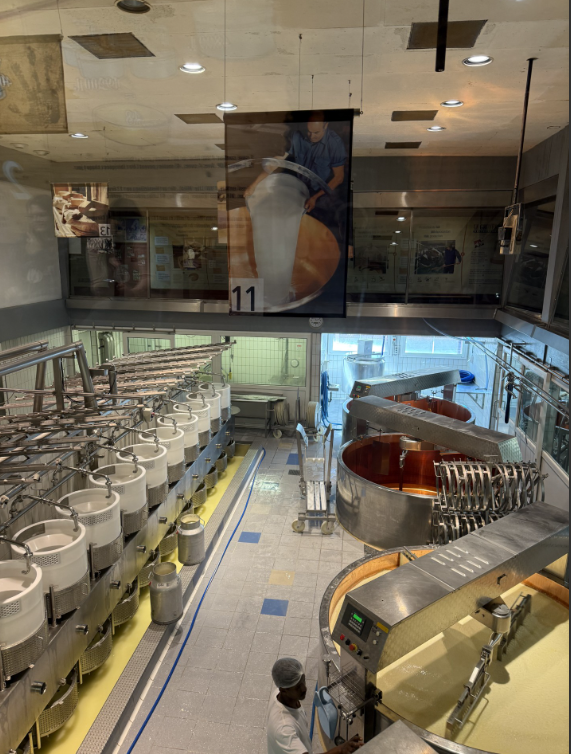
For around an hour we were able to watch the fromagers make the cheese from scratch, starting in entirely liquid form and being put into molds to be aged. It started with the milk mixture (milk, cultures, and rennet added for curdling purposes) being mixed in a huge vat. The curd is heated and cut by long silver knives that go around the entire vat. All of the curd drains from the vats into smaller individual molds that have previously been prepared with casings/moldings. Using what appears to be large dust pans, the fromagers scoop out the foam that has accumulated on the top of the cheese curd after being transported from vat to mold. They are then marked, the rest of the casing is put on top of the cheese, and the entire line of molds flips over to then repeat the process for the second vat. The process was long, with many intricate steps and seemingly large and heavy machinery. I truly had no idea how cheese was made in an industrial setting, so seeing the process up close was definitely an eye opening experience.
We then ate at the restaurant within the cheese factory, Le restaurant de la Maison de Gruyère. They had a variety of options featuring the Gruyère cheese, including hamburgers, fondues, risottos, and much more! The food was delicious and overall it was a nice ending to our morning excursion.
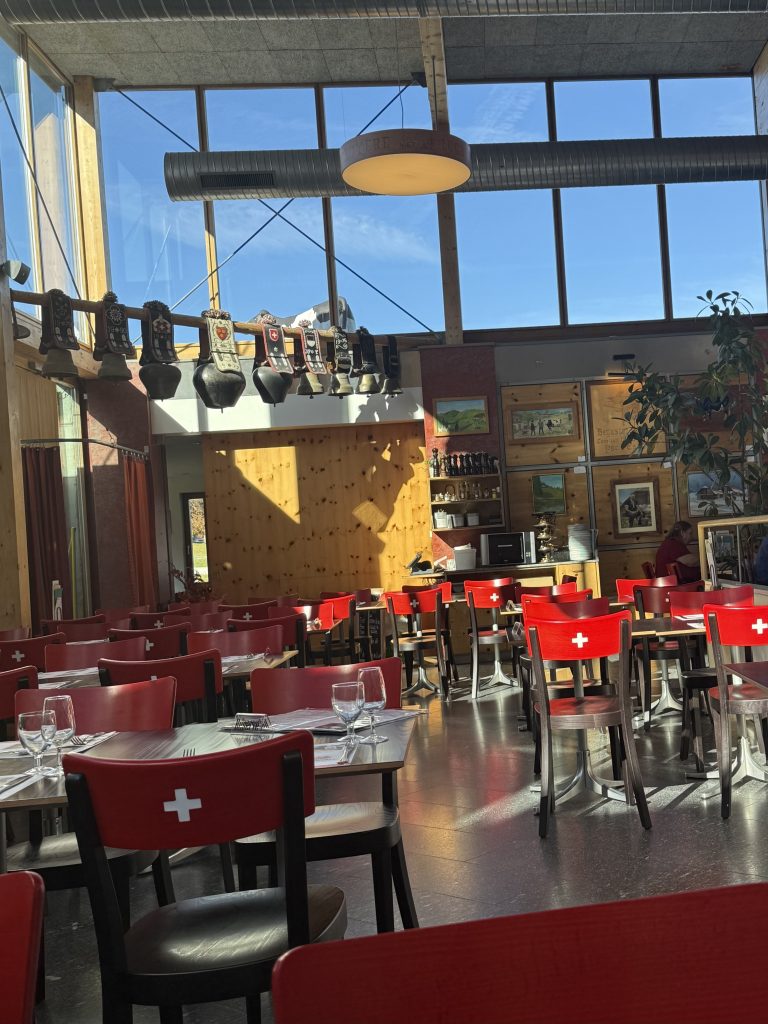
Twenty minutes later, we arrived at the Maison Cailler awaiting our next tour and taste testing experience. Our group was led through different rooms recounting (through audio) and demonstrating (with animatronics) the history leading up to the success of Cailler and Swiss chocolate making. There was so much to learn, from how chocolate became popular, to the stories of the people who grow and farm the cocoa beans, to how the chocolate is actually made from cocoa beans to a packaged product. Thankfully, we also had the opportunity to see chocolate being made from start to finish, as well as taste test their most popular chocolates. After learning about the history and tasting for ourselves, we made our way to the gift shop where we ended our experience at Maison Cailler.
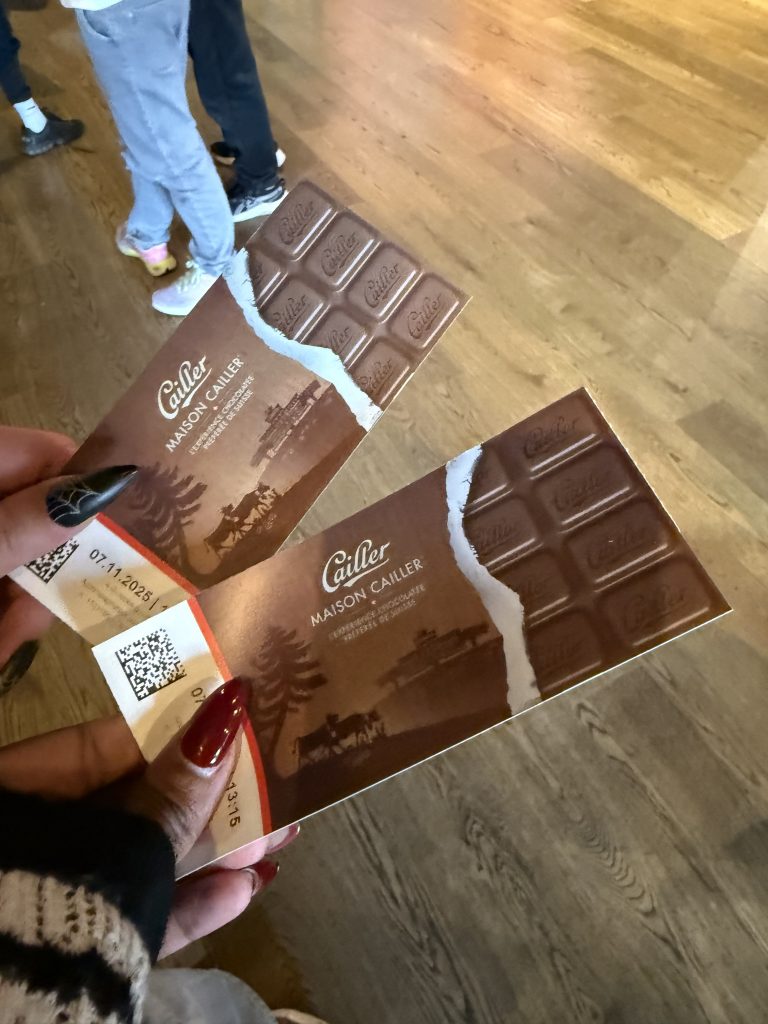
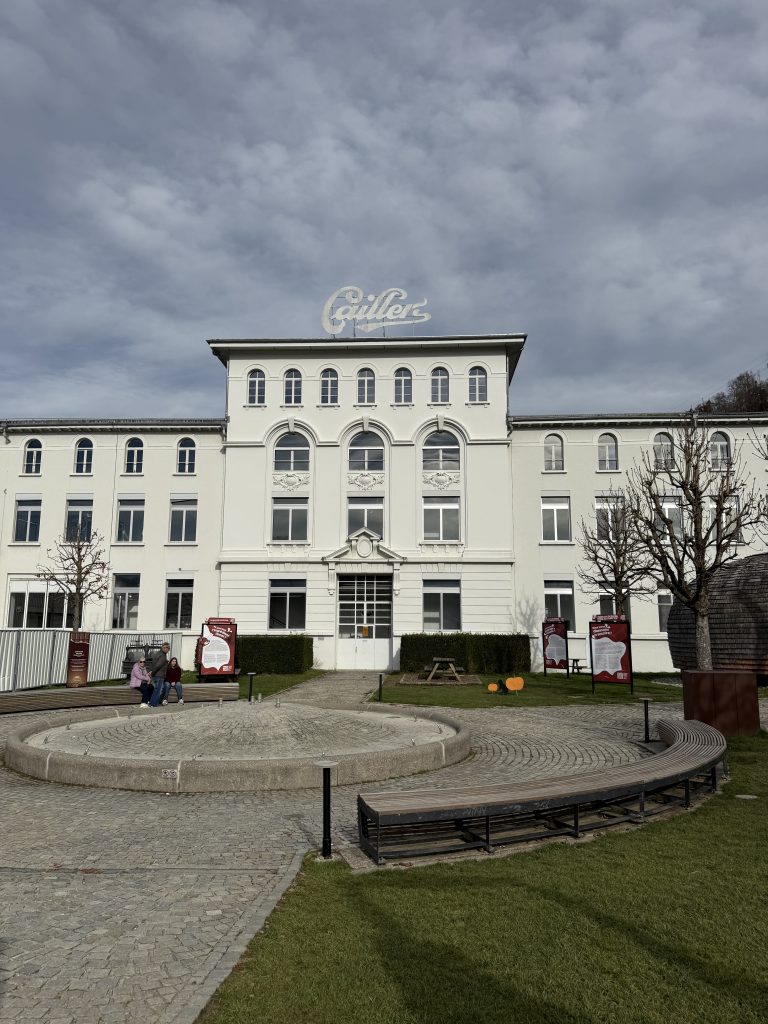
This trip has been an incredible opportunity to learn more about the dynamics of science and policy in the field. We’ve had the chance to watch negotiations in real time, meet with delegates and other youth groups, and absorb so much information through knowledge labs, all while exploring all that Switzerland has to offer. I truly believe these three excursions were the perfect way to close this trip and I look forward to more life-changing experiences like this one in the future!
